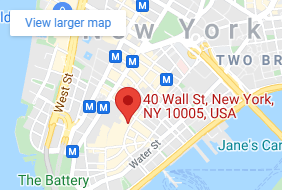With millions of students in public schools, accidents and injuries are a statistical reality. The legal questions that emerge in those cases where a student injured are: What is the duty the school owes to the student and what liability attaches to the school? The body of law that determines the liability of a school is in the category of negligence or tort law, which sets out the general principles that everyone, including schools, are responsible for their own wrong doing if the act that produced the harm is reasonably foreseeable, and if it is a substantial factor in causing the harm. The principle of law just stated when properly applied to the facts at issue will determine whether the injured student or the defendant school, prevails.
An application of the general rule was recently made in Godoy v. Central Islip Union Free District, decided in the Suffolk County Supreme Court by Justice Pastoressa, and published in the New York Law Journal on September 6, 2012. In that case, a student was participating in a compulsory physical education activity in the gymnasium of the school. The sporting event was “floor hockey” in which the student plaintiff Godoy, was on a team with two other students. The opposing team consisted of the teacher Scerbo, and two other students. During the game, Scerbo was about to make a slap shot into the opponent’s net, when Godoy, while attempting to block the shot, was struck in the arm with Scerbo’s hockey stick, sustaining personal injuries.
Godoy brought an action against the school and Scerbo, claiming a lack of supervision, an unreasonable act by Scerbo, and inadequate safety equipment. A motion for summary judgment was made by the defendants arguing that the facts in question failed to set forth a prima facia case. The court granted the motion and dismissed the case with a finding that neither the school, nor Scerbo were negligent, nor that Scerbo’s conduct was not “unreasonable” under the circumstances.
By its decision to dismiss the Godoy case on a motion, the court was holding that there was no issue of fact to be submitted to a jury and that therefore, the case should be dismissed as a matter of law.
What the Godoy and hundreds of similar cases teach is that a plaintiff who brings an action in negligence, must always satisfy four elements in order to have a cause of action move forward to a trial by jury, and not a dismissal by the court (as in the Godoy case). They are:
- A duty owing from the defendant to the plaintiff;
- A breach of that duty by the defendant by an act that is unreasonable or below the standard of care owed to the plaintiff;
- The injury produced by the negligent act of the defendant must be foreseeable; and
- The negligent act must be a substantial factor in causing the injury.
Therefore, in order to prevent a dismissal of the case by the court “as a matter of law”, the plaintiff personal injury trial attorney must be prepared to support each of the elements necessary to make out a prima facia case (one that a jury can ultimately decide), with actual facts or inferences (those facts which follow through the application of common sense and reason). Failing to do so, will result in a dismissal of the case, a draconian result that will be most difficult to reverse should an appeal to a higher court be taken.




























